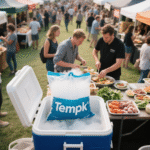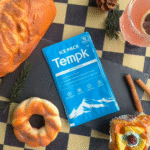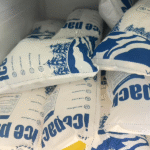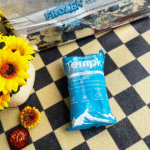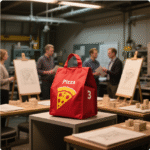Cold chain supply management is essential for businesses that transport and store temperature-sensitive goods, بما في ذلك الأدوية, طعام, والمواد البيولوجية. في 2025, the challenges and opportunities within this industry are evolving rapidly. Implementing the best practices, incorporating cutting-edge technology, and staying compliant with ever-stricter regulations is critical for success. This article will guide you through the strategies and innovations that will help optimize your cold chain operations and enhance product safety.

Key Elements of Cold Chain Supply Management
What Is Cold Chain Supply Management and Why Is It Crucial?
Cold chain supply management ensures the safe and effective transportation of temperature-sensitive goods by maintaining precise temperature control throughout the journey—from production to delivery. This process involves the use of refrigerated transport, temperature-controlled storage, and real-time monitoring systems. Cold chain is vital for products such as vaccines, البيولوجيا, المأكولات البحرية, والمواد القابلة للتلف, where even a minor deviation in temperature can result in degradation, rendering them ineffective or unsafe.
المكونات الرئيسية:
-
Temperature-Controlled Transport: Vehicles and containers that maintain specific temperature ranges.
-
Validated Storage Systems: Refrigerated and insulated warehouses designed to store products at regulated temperatures.
-
المراقبة في الوقت الحقيقي: IoT sensors and data loggers that track temperature, رطوبة, and location to ensure product integrity.
Best Practices for Cold Chain Supply Management in 2025
1. Temperature Control and Monitoring
Maintaining a consistent temperature throughout the supply chain is critical to product safety and efficacy. في 2025, advancements in real-time temperature monitoring are essential for compliance and risk mitigation. Smart sensors connected to the Internet of Things (إنترنت الأشياء) are being used extensively to monitor key parameters, such as temperature, رطوبة, والموقع, throughout the journey.
-
مستشعرات إنترنت الأشياء: Enable real-time tracking and alerts, allowing businesses to respond promptly to temperature excursions.
-
سجلات البيانات: Provide verifiable records for compliance, crucial for audits and regulatory standards.
2. حلول التغليف المتقدمة
Innovative packaging solutions are a cornerstone of effective cold chain management. The use of phase-change materials (PCMS) and insulated containers helps maintain the temperature for longer durations, تقليل خطر التفسد.
-
مواد تغيير المرحلة (PCMS): These materials absorb and release heat to stabilize the temperature inside packaging.
-
Active Packaging: Incorporates built-in refrigeration to control temperature during long shipments, ensuring products remain within the desired range.
3. Choosing a Reliable Logistics Provider
Partnering with a reliable cold chain logistics provider is crucial for ensuring safe, متوافق, and timely delivery. When selecting a provider, ensure they are experienced in handling temperature-sensitive shipments, offer scalable solutions, and comply with Good Distribution Practices (الناتج المحلي الإجمالي) and other regulatory standards. Your provider should also have the ability to track shipments in real-time and offer contingency solutions for unexpected delays or disruptions.
Emerging Technologies in Cold Chain Supply Management
إنترنت الأشياء (إنترنت الأشياء) for Real-Time Monitoring
في 2025, IoT continues to be a game-changer in cold chain logistics. IoT sensors allow businesses to monitor their shipments in real-time, offering continuous data on the condition of goods. This capability helps in making quick decisions and addressing temperature deviations before they cause damage.
-
Real-Time Data: Receive alerts immediately when temperature, رطوبة, or location deviates from the set range.
-
Proactive Management: IoT systems enable businesses to adjust routes or storage conditions to maintain optimal product quality.
Blockchain for Transparency and Traceability
Blockchain technology is increasingly being integrated into cold chain management systems to provide a transparent, immutable record of product handling. This ensures traceability throughout the supply chain, from manufacturing to delivery.
-
End-to-End Traceability: Blockchain enables secure and auditable records of every step, enhancing regulatory compliance.
-
Increased Accountability: With blockchain, businesses can provide verifiable proof of temperature conditions and handling practices during transit.
Automation and Robotics in Warehousing
The role of automation in cold chain warehouses is growing, with automated storage and retrieval systems (ASRS) reducing human error and improving efficiency. Robotics and drones are used for inventory management and product picking, ensuring faster and more accurate operations in temperature-controlled environments.
Sustainability and Innovations Shaping Cold Chain Supply Management
الاستدامة في لوجستيات سلسلة التبريد
مع استمرار المخاوف البيئية في النمو, sustainability has become a key focus in cold chain logistics. Businesses are adopting energy-efficient solutions such as solar-powered refrigeration systems and utilizing biodegradable or reusable packaging materials to reduce their environmental footprint.
-
Energy-Efficient Refrigeration: Solar-powered units and low-energy consumption refrigeration systems are becoming standard.
-
العبوة الصديقة للبيئة: The demand for biodegradable, قابل لإعادة التدوير, and reusable packaging solutions is increasing.
الذكاء الاصطناعي (منظمة العفو الدولية) for Operational Efficiency
AI-driven technologies are revolutionizing route optimization, الصيانة التنبؤية, and demand forecasting, making cold chain operations more efficient. AI algorithms predict potential disruptions, suggest alternate routes, and forecast inventory needs.
-
Predictive Maintenance: AI analyzes equipment performance and predicts maintenance needs before failures occur.
-
تحسين الطريق: AI models traffic patterns and delivery conditions to optimize shipping routes, تقليل التأخير.
التعليمات: إدارة توريد سلسلة التبريد
س 1: Why is temperature control important in cold chain logistics?
Temperature control is essential to maintain the efficacy and safety of temperature-sensitive products. Any deviation can compromise product quality and make it unsafe for use.
Q2: How can blockchain enhance cold chain transparency?
Blockchain technology provides a secure, transparent record of every transaction and movement, ensuring compliance and reducing fraud in cold chain logistics.
س 3: What technologies should I use for cold chain monitoring?
Utilize IoT-enabled sensors for real-time temperature monitoring, combined with cloud-based platforms for data analytics, to ensure product integrity.
الخلاصة والتوصيات
Cold chain supply management is essential for businesses handling temperature-sensitive goods. By adopting best practices such as real-time monitoring, utilizing advanced packaging solutions, and partnering with reliable logistics providers, businesses can ensure product safety, تقليل التلف, and stay compliant with regulatory standards. فضلاً عن ذلك, leveraging emerging technologies like AI, إنترنت الأشياء, and blockchain will further optimize cold chain operations and provide better traceability, improving overall efficiency.
الخطوات التالية:
-
Assess your current cold chain logistics systems and identify gaps.
-
Invest in sustainable practices like energy-efficient refrigeration and eco-friendly packaging.
-
Implement real-time tracking technologies to ensure optimal product conditions.
حول Tempk
و Tempk, we specialize in end-to-end cold chain supply management solutions. Our services include validated refrigerated transport, أنظمة المراقبة في الوقت الحقيقي, and compliant warehousing, helping you manage your cold chain operations with confidence.
دعوة إلى العمل: Contact us today for a cold chain assessment and learn how we can optimize your operations for 2025 وما وراءها.

















